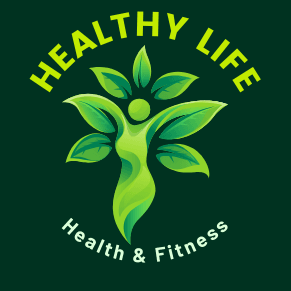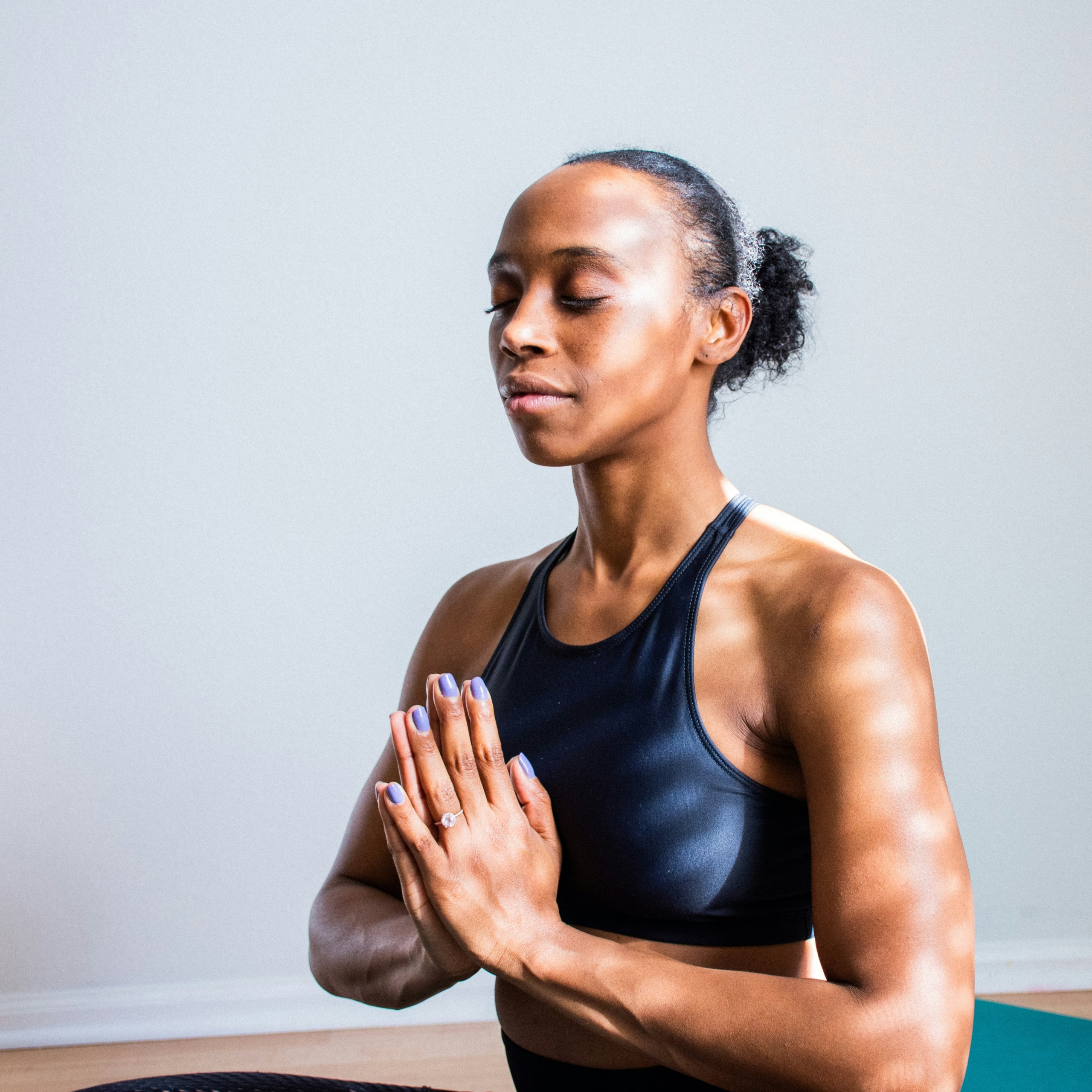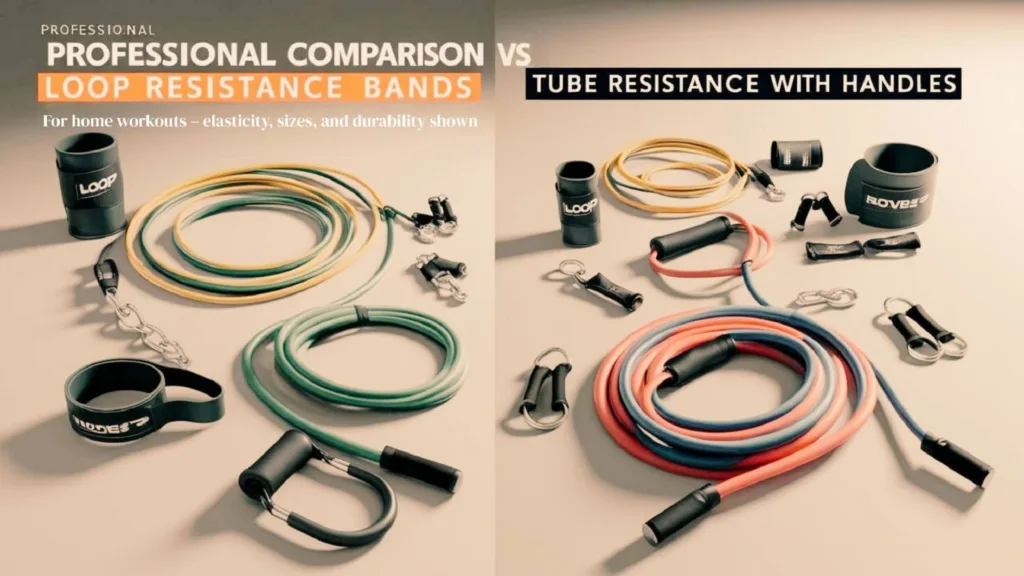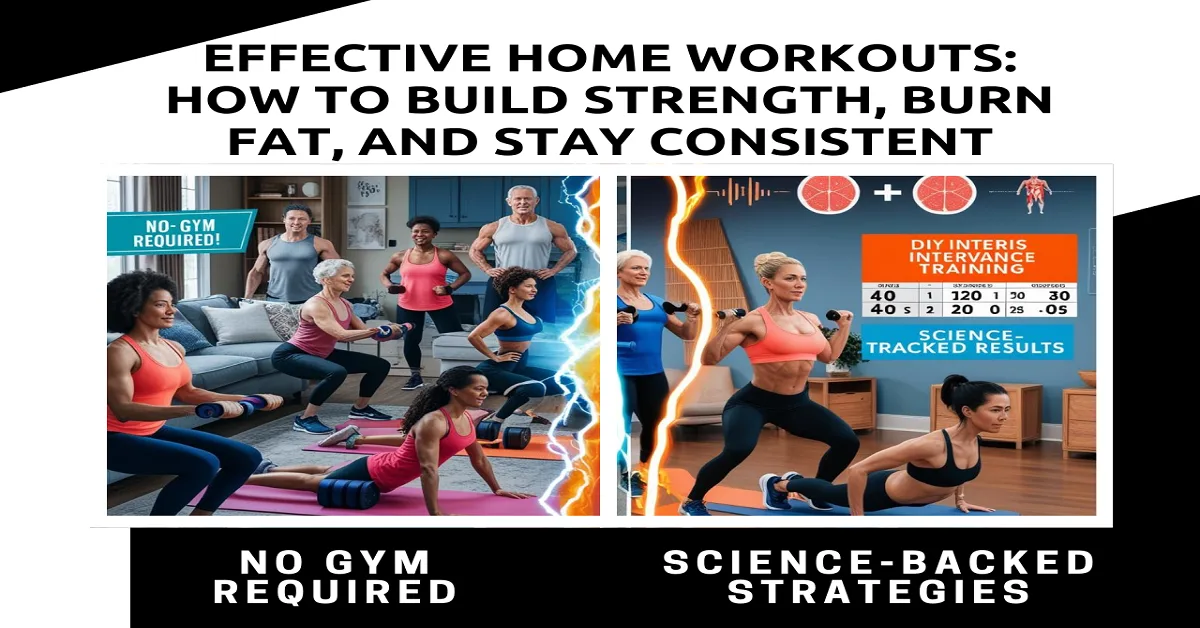☕ Buy Me a Coffee! (And Fuel My Late-Night Blogging Adventures)
Hey there, friend! 👋
First off—thank you for reading my content. It means the world to me! If you’ve found value here (or just enjoyed my ramblings), here’s a fun way to support my work: Buy me a coffee! ☕✨
Wait—what does that mean?
Well, some of the links in this post are affiliate links. That means if you click through and make a purchase, I may earn a small commission—at zero extra cost to you. Think of it like tipping your favorite barista, except I’m serving up blog posts instead of espresso shots.
Why does this matter?
- It helps keep this blog running (and my caffeine addiction alive).
- You get the exact same price—no hidden fees, just good vibes.
- I only recommend products I truly love and/ use myself. No shady stuff—promise!
So if you’re feeling generous (or just want to see what I’ll write about next after three cups of coffee), click away! Your support lets me create more free content for you. Win-win, right?
👉 Click Here to Buy Me a Coffee (or Shop My Faves!)
P.S. Not ready to shop? No worries! Sharing this post or leaving a comment also fuels my motivation. Thanks for being awesome.
Last Updated on February 14, 2025 by Ferdousi Akter
Introduction to Fitness Workouts
In today’s article, we explore the ultimate guide to fitness workouts… Fitness workouts play an essential role in achieving and maintaining a healthy lifestyle. While many individuals may initially approach fitness with the primary goal of weight loss, the benefits of engaging in fitness workouts extend far beyond this singular focus. These workouts are designed to strengthen muscles, boost cardiovascular health, enhance flexibility, and promote mental well-being, creating a holistic approach to health and fitness.
The importance of fitness workouts can be attributed to their ability to cater to various health objectives. For instance, strength training workouts increase muscle mass, which contributes to a higher basal metabolic rate, while aerobic exercises improve heart health and stamina. Regular participation in these workouts supports bone density, reduces the risk of chronic diseases, and helps manage stress, proving that fitness is multifaceted.
Moreover, fitness workouts are not confined to the gym environment. They can encompass a wide variety of physical activities, including running, cycling, swimming, and even recreational sports. This variety keeps individuals engaged and motivated, preventing boredom and promoting consistent participation. The versatility in workout choices enables each person to tailor their fitness regimen based on personal preferences and lifestyle needs.
Furthermore, fitness workouts can foster social connections. Whether participating in group classes or team sports, individuals can create bonds with others who share similar goals. This sense of community not only enhances motivation but also provides a supporting network that encourages accountability and progress in one’s fitness journey.
In conclusion, fitness workouts are a crucial component of a balanced and healthy lifestyle. They offer numerous benefits that encompass physical, mental, and social aspects, allowing individuals to unlock their full potential and lead healthier, more fulfilling lives.
Understanding Different Types of Fitness Workouts
Fitness workouts encompass a diverse range of methods designed to improve individual health and well-being. Among the most common types are cardiovascular exercises, strength training, flexibility workouts, and high-intensity interval training (HIIT), each offering unique benefits suited to different fitness goals.
Cardiovascular exercises, or aerobic workouts, are primarily focused on increasing heart rate and enhancing overall endurance. Activities such as running, cycling, and swimming fall into this category. These exercises help improve cardiovascular health, promote weight loss, and boost stamina. Engaging in regular cardio workouts can lead to improved lung capacity, endurance, and mental clarity, while also reducing the risk of chronic diseases.
Strength training, also known as resistance training, involves the use of weights, resistance bands, or body weight to build muscle strength and mass. Exercises like squats, deadlifts, and push-ups not only help in developing muscle but also improve bone density and metabolic rate. Additionally, strength training is crucial for maintaining a balanced physique and supporting overall functional fitness.
Flexibility workouts focus on extending the range of motion in the joints and muscles. Common activities include yoga and stretching routines, which can enhance flexibility, promote better posture, and reduce the risk of injuries. Improved flexibility also facilitates better performance in a variety of physical activities, making it an important component of a comprehensive fitness regimen.
High-intensity interval training (HIIT) has gained immense popularity due to its efficiency in burning calories in a short amount of time. This type of workout alternates between short bursts of intense activity and recovery periods, providing cardiovascular benefits while also promoting muscle strength. HIIT workouts can vary widely in their design, allowing participants to tailor them according to their fitness levels and preferences.
Incorporating a mix of these different types of workouts can lead to a well-rounded fitness routine, enhancing physical health and promoting longevity. Understanding these diverse workout types allows individuals to unlock their potential and achieve their health goals effectively (Cleveland Clinic, Healthline, Harvard Health, Google Store, Health.com, PubMed).
How to Set Fitness Goals

Setting realistic and achievable fitness goals is a pivotal step towards unlocking your fitness potential. It provides direction and motivation while also allowing you to track your progress effectively. One of the most effective frameworks for establishing these goals is the SMART criteria, which stands for Specific, Measurable, Achievable, Relevant, and Time-bound.
When creating your fitness goals, begin by making them specific. Instead of stating a vague objective like “I want to be fit,” articulate a clear goal such as “I aim to run 5 kilometers without stopping.” This specificity helps outline concrete steps towards achieving your desired outcome.
Next, ensure your goals are measurable. Using quantifiable metrics allows you to track your progress systematically. For example, rather than aiming to “lose weight,” a measurable goal would be “to lose 5 kilograms within three months.” Tracking your progress not only emphasizes accountability but also assures you of your advancements.
It is equally essential that the goals you set are achievable. While ambition can be a powerful motivator, setting unattainable goals may lead to frustration. Assess your current fitness level and set goals that push your limits while remaining within reach, such as starting with short workout sessions before increasing intensity over time.
Relevance is another critical aspect of goal-setting. Your fitness goals should align with your overall life objectives and aspirations. For instance, a goal related to training for a marathon may be pertinent if you aspire to maintain general health and endurance. Lastly, ensure your goals are time-bound by setting deadlines for their achievement, which fosters a sense of urgency and commitment.
Adhering to the SMART framework will not only enhance your goal-setting process but also ensure that you remain focused and motivated in your fitness journey. By implementing these principles, you can pave the way for a structured and productive workout experience.
Creating a Balanced Workout Plan
Designing an effective workout plan requires careful consideration of the key components known as FITT: Frequency, Intensity, Time, and Type. By understanding and implementing these elements, individuals can create a balanced program that promotes overall fitness and peak performance.
Frequency refers to how often exercises are performed within a specific timeframe, typically measured in sessions per week. For general fitness, it is recommended to engage in moderate aerobic activity at least five days a week, or vigorous activity on three days, supplemented with strength training exercises on two or more days. This frequency ensures balanced development and minimizes the risk of injury.
Intensity pertains to how hard one works during exercises. It can vary significantly based on goals—whether for weight loss, muscle gain, or endurance improvement. Monitoring heart rate can be an effective way to gauge intensity; for instance, maintaining 50-70% of maximum heart rate for moderate-intensity activities enhances cardiovascular health while challenging higher percentages boosts performance. Choosing the right intensity is crucial for optimizing results without overexertion.
Time indicates the duration of each workout session. Typically, one should aim for at least 150 minutes of moderate aerobic activity or 75 minutes of vigorous activity weekly, alongside resistance training. Breaking down sessions into manageable time slots throughout the week can make the routine more sustainable and enjoyable.
Type defines the kind of exercise performed. A balanced program should incorporate various modalities, such as aerobic exercises, strength training, flexibility workouts, and balance exercises. Combining these types not only addresses different fitness components but also sustains motivation by preventing monotony.
Learn more about a balanced workout plan:
- Stretch Coach – FITT Principle for Cardio, Strength, Stretching & Injuries
- The Replay Club – Creating a Balanced Workout Routine
- Verywell Fit – Try the FITT Principle to Maximize Your Workouts
- Healthline – The FITT Principle: Benefits & How to Use It
- Alliance Ortho – Building a Balanced Workout Routine
By harmonizing frequency, intensity, time, and type, individuals can develop a well-rounded workout plan that maximizes fitness outcomes, leading to better performance and health in everyday activities.
Essential Equipment for Fitness Workouts
When starting a fitness routine, choosing the right equipment is crucial for effectiveness and safety. Basic tools like dumbbells and resistance bands are essential for all fitness levels. Dumbbells offer versatility, aiding in muscle group targeting and strength enhancement. Resistance bands, with varying levels of resistance, build strength and flexibility, ideal for home or travel workouts. Kettlebells diversify workouts, improving flexibility and cardiovascular health through functional movements. Cardio machines such as treadmills, bikes, and rowers support aerobic conditioning and weight management. Select equipment based on goals, space, and budget, starting with foundational pieces and expanding as fitness improves. Learning proper usage from experts ensures safety and performance enhancement (A Beginner’s Guide to Starting a Physical Fitness Routine).
Home Workouts vs. Gym Workouts
Home workouts and gym workouts both provide unique benefits and drawbacks, influencing an individual’s approach to fitness. One significant advantage of home workouts is convenience. Exercising at home eliminates the commute to a gym, allowing for greater flexibility in incorporating workouts into a busy schedule. This aspect is particularly beneficial for those with family responsibilities or unpredictable work hours. Additionally, home workouts often require minimal or no equipment, making it an accessible option for individuals who may not invest heavily in fitness gear.
However, there are challenges associated with exercising at home. Without the structure of a gym environment, individuals may struggle with motivation and self-discipline. The absence of group classes or personal trainers can lead to a lack of guidance, resulting in improper techniques or ineffective routines. Furthermore, while bodyweight exercises are effective, they may not provide the same level of resistance training that gym equipment offers, limiting the potential for strength gains.
On the other hand, gym workouts come with their own set of advantages. Gyms typically provide access to a wider variety of equipment, enabling individuals to target specific muscle groups and engage in diverse workout formats. Additionally, many gyms offer classes led by certified instructors, which can enhance motivation and ensure participants are employing correct form. The social environment may also foster a sense of community, encouraging individuals to remain committed to their fitness goals.
Despite these advantages, gym workouts often require a financial commitment, with monthly memberships and potential extra costs for classes or personal training sessions. Moreover, the gym environment may not appeal to everyone, particularly those who feel intimidated or uncomfortable in a public setting. Ultimately, the choice between home workouts and gym workouts will depend on personal preferences, goals, and lifestyle considerations. Each option presents unique pathways to achieving fitness, emphasizing the importance of selecting the right fit to unlock one’s potential.
Staying Motivated on Your Fitness Journey
Maintaining motivation throughout your fitness journey can often be challenging. However, implementing specific strategies can significantly enhance your determination to reach your health and fitness goals. One effective method is to track your progress consistently. By recording your workouts and monitoring improvements, such as increased weights or longer running distances, you can visually see how far you have come. Incorporating fitness apps or journals can help you stay organized and provide a sense of accomplishment when you review your progress over time.
Another useful strategy is to establish a workout buddy system. Partnering with a friend or family member not only makes exercising more enjoyable but also adds an element of accountability. When you know someone else is relying on you to show up for workouts or group classes, you are less likely to skip sessions. Furthermore, sharing your fitness experiences and challenges can lead to greater motivation as you encourage one another along the way.
Celebrating small victories is also fundamental to maintaining motivation in your fitness routine. Acknowledging your achievements, regardless of their size, fosters a positive mindset and reinforces your commitment. For instance, if you complete a challenging workout or achieve a particular fitness milestone, take time to reward yourself. Rewards can include treating yourself to a massage, purchasing new workout gear, or simply enjoying a relaxing day off from your routine. Small celebrations remind you of your hard work and keep your enthusiasm high as you continue to pursue your fitness aspirations.
Incorporating these strategies can create a solid foundation for sustained motivation in your fitness journey. By tracking progress, fostering accountability, and celebrating victories, you can overcome obstacles, maintain focus, and ultimately unlock your full potential.
Nutrition and Fitness Workouts
Understanding the relationship between nutrition and fitness workouts is vital for optimizing performance and achieving workout goals. A well-balanced diet not only fuels the body but also enhances recovery, improves strength, and builds endurance. Proper nutrition is divided into two critical phases: pre-workout and post-workout meals, both of which play a significant role in performance and recovery.
- Pre-Workout Nutrition: Learn more about the importance of pre-workout meals and how they fuel your body for exercise from1.
Before engaging in physical activity, it is essential to consume a meal that provides adequate energy. Ideally, a pre-workout meal should be rich in complex carbohydrates, such as whole grains and fruits, alongside moderate protein sources like yogurt or lean meats. This combination offers sustained energy, ensuring that the body remains resilient throughout the workout. It’s advisable to plan this meal around 1-3 hours before exercising, allowing it sufficient time for digestion. Additionally, hydration should not be overlooked; staying well-hydrated before a workout is crucial as even mild dehydration can impair performance and increase fatigue.
- Hydration Tips: Discover why staying hydrated before workouts is crucial for performance and recovery from here2.
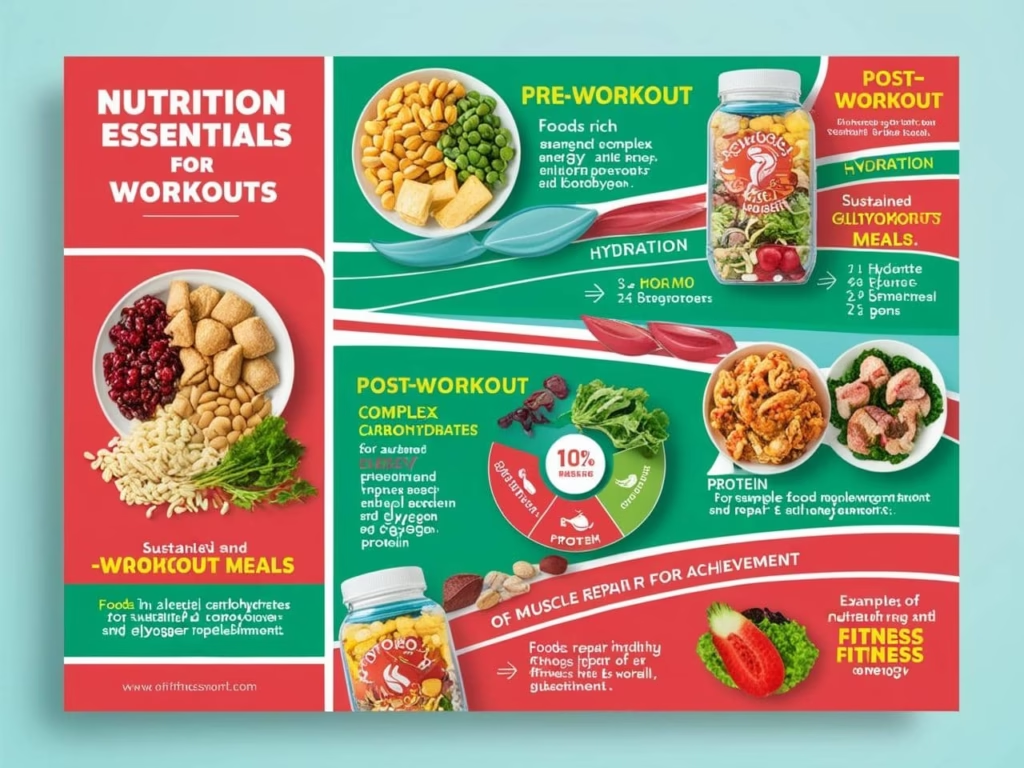
After the workout, the body enters a recovery phase where nutrition plays a critical role. A post-workout meal should aim to replenish glycogen stores and repair damaged muscle tissues. This can be achieved through a combination of proteins and carbohydrates, such as a smoothie with protein powder, banana, and spinach, or lean meats with sweet potatoes and vegetables. Consuming this meal within an hour after exercising can significantly enhance recovery. Furthermore, hydration continues to be an integral part of this phase, helping to maintain optimal bodily functions.
- Post-Workout Recovery: Explore effective strategies for post-workout nutrition to enhance muscle recovery and glycogen replenishment3.
Incorporating a variety of nutrient-dense foods into one’s diet can support and enhance workout goals. Foods rich in antioxidants, for instance, can help reduce exercise-induced oxidative stress, while healthy fats contribute to overall health and energy levels. By prioritizing a nutrient-rich diet alongside structured fitness workouts, individuals can unlock their full potential, ultimately leading to better performance and improved health outcomes.
- Nutrient-Dense Foods: Find out about the benefits of nutrient-dense foods for supporting workout goals and overall health4.
Common Mistakes to Avoid For Fitness Workouts
Embarking on a fitness journey can be exciting yet challenging, and it’s not uncommon for individuals to make certain mistakes that can hinder their progress. One of the most prevalent issues is overtraining, which occurs when a person pushes their body beyond its limits without giving it sufficient time to recover. While the enthusiasm to achieve fitness goals is commendable, it is essential to recognize that muscles need time to repair and grow stronger. To avoid overtraining, individuals should incorporate rest days into their weekly routine and vary their workout intensity.
Another common misstep is neglecting rest and recovery. Many beginners believe that rest days are unproductive; however, this is a misconception. Rest is critical for muscle recovery, hormonal balance, and overall performance improvement. Ensuring adequate sleep and scheduled rest days can help prevent burnout and injuries, ultimately enhancing the effectiveness of an individual’s fitness regimen.
Additionally, many individuals fail to listen to their bodies, which can lead to eventual setbacks. Ignoring signs of fatigue or pain can result in detrimental consequences, such as serious injuries. Being attuned to the body’s signals and adjusting workouts accordingly can help mitigate this risk. For instance, if persistent soreness or discomfort occurs, it may be prudent to modify the workout intensity or switch to low-impact exercises for a period.
Incorporating proper warm-up and cool-down routines is also crucial, yet often overlooked. These practices prepare the body for exercise and aid in recovery afterward, facilitating better performance and reducing the risk of injury. By avoiding these common mistakes and paying attention to one’s body, individuals can navigate their fitness journey more effectively and unlock their full potential.
Common Mistakes to Avoid for Fitness Workouts (With Table)
| Key Factor | Description |
|---|---|
| 1. Overtraining | Pushing the body beyond limits without adequate recovery time. Muscles need rest to repair and grow stronger5. |
| 2. Neglecting Rest and Recovery | Many beginners overlook the importance of rest days, which are crucial for muscle recovery, hormonal balance, and overall performance improvement6. |
| 3. Ignoring Body Signals | Failing to listen to signs of fatigue or pain can lead to serious injuries. It’s essential to adjust workouts based on the body’s feedback to avoid setbacks7. |
| 4. Lack of Warm-up and Cool-down | Proper warm-up and cool-down routines prepare the body for exercise and aid in recovery, reducing the risk of injury and improving performance8. |
| 5. Varying Workout Intensity | Incorporating variations in workout intensity helps prevent overtraining and keeps workouts effective9. |
Tracking Your Progress For Fitness Workouts
Tracking your progress in fitness workouts is crucial for staying on track and reaching your goals. By monitoring your performance, you can pinpoint areas for improvement, adjust your training strategies, and stay motivated throughout your fitness journey.
Fitness Apps: Harnessing Technology for Progress Tracking
One of the most popular and effective methods to monitor fitness progress is through dedicated fitness apps. These apps allow you to log workouts, track nutrition, and set personalized goals conveniently on your smartphone or device. Features like progress graphs, goal reminders, and customizable workout plans provide valuable insights and feedback instantly, enabling you to make timely adjustments to your fitness regimen.
Benefits of Using Fitness Apps:
- Convenience: Access your workout data anytime, anywhere.
- Feedback: Receive instant feedback on your progress.
- Motivation: Stay motivated with goal-setting and achievement tracking.
Workout Journals: Documenting Your Fitness Journey
Keeping a workout journal is another effective way to track progress. By consistently recording details such as exercises performed, repetitions, sets, duration, and perceived exertion, you create a comprehensive log of your fitness activities. This method not only enhances accountability but also allows you to analyze trends and identify patterns in your workouts over time.
Advantages of Using Workout Journals:
- Accountability: Track your consistency and adherence to your workout plan.
- Insight: Reflect on past performances to refine future workouts.
- Personalization: Customize your fitness journey based on recorded data.
Joining Fitness Communities: Support and Encouragement
Engaging with fitness communities, whether online forums or local groups, provides invaluable support and encouragement. Interacting with like-minded individuals who share similar fitness goals fosters accountability and motivation. These communities offer a platform to share progress, celebrate achievements, and seek advice, creating a supportive environment that enhances the overall fitness experience.
Benefits of Joining Fitness Communities:
- Support: Receive encouragement and guidance from peers.
- Motivation: Stay inspired by witnessing others’ progress.
- Knowledge Sharing: Learn new tips and strategies to improve your workouts.
Staying Safe: Injury Prevention Tips
Injury prevention is crucial for maintaining progress in fitness and avoiding setbacks. By incorporating effective strategies into your workout routine, you can safeguard against injuries and optimize your fitness journey.
Importance of Proper Warm-Up and Cool-Down Routines
Warm-Up: Preparing Your Body for Exercise
A proper warm-up is essential to prepare your body for physical activity. It gradually increases heart rate and blood flow to muscles, reducing the risk of injury during more intense workouts. Incorporate dynamic exercises like jogging, jumping jacks, and mobility drills to warm up key joints and muscles effectively.
Cool-Down: Transitioning Your Body to Rest
Cooling down allows your body to return to a resting state and aids in muscle recovery. Include stretching exercises targeting major muscle groups used during your workout. This promotes flexibility, reduces muscle stiffness, and prevents soreness.
Maintaining Proper Form: Preventing Injuries Through Technique
Importance of Correct Exercise Form
Maintaining proper form while exercising is essential to prevent injuries. Incorrect technique can strain muscles and joints. Learn each exercise’s correct form, possibly using mirrors for self-assessment or seeking guidance from fitness professionals. Adjust form as needed to avoid unnecessary stress on your body.
Listening to Your Body: Recognizing Limits and Signs of Fatigue
It’s vital to listen to your body’s signals during workouts. Pay attention to signs of fatigue or discomfort, which could indicate overexertion or potential injury risk. Modify exercises or take breaks as necessary to prevent pushing your body beyond its limits.
Gradual Progression: Steady Advancement for Long-Term Success
Importance of Incremental Increases in Intensity
Avoid sudden spikes in workout intensity or volume, as they can strain your body and lead to injuries. Instead, aim for gradual progression over time. Allow your body to adapt to increased demands and prioritize recovery between sessions.
Incorporating Rest and Recovery
In the pursuit of fitness, rest and recovery are often overlooked but crucial for optimal performance and long-term progress. These elements allow the body to repair tissues, restore energy levels, and prevent fatigue, ultimately enhancing workout effectiveness and reducing the risk of injury and burnout.
- Active Recovery: Integrating low-intensity activities like walking, light cycling, or yoga promotes blood circulation and accelerates healing without straining muscles. This approach helps alleviate soreness and improves flexibility while keeping the body active and engaged.
- Rest Days: Scheduled rest days are essential for muscle recovery and growth. They allow the body to repair microtrauma caused by intense workouts, leading to increased strength and endurance over time. Rest days also help maintain hormonal balance crucial for overall health and fitness performance.
Quality sleep is equally vital for physical and mental recovery during the fitness journey. Deep sleep facilitates the release of growth hormones that aid in muscle repair and recovery. Prioritizing sleep hygiene, such as establishing a regular sleep schedule and optimizing sleep environment, supports optimal recovery and enhances exercise performance.
Success Stories: Inspiration from Real People
In the journey towards better health and fitness, real-life success stories serve as powerful motivators for individuals striving to make positive changes. These stories highlight not just physical transformations but also the resilience, dedication, and commitment required for personal well-being.
- Sarah’s Journey: Sarah, a 35-year-old mother of two, lost 45 pounds in 12 months through determination and a structured workout routine. She emphasizes setting realistic goals and celebrating small victories, which boosted her energy levels and self-esteem.
- Michael’s Transformation: At age 50, Michael revitalized his fitness journey with strength training and cardiovascular workouts. He regained stamina and lost inches around his waist, proving that dedication can lead to remarkable results at any age.
These inspiring examples underscore the importance of support, goal-setting, and commitment to effective workouts. They demonstrate that with perseverance, anyone can transform their lives and inspire others along the way. As Sarah wisely puts it, “Developing a routine and staying consistent were key to my success.”
Successful fitness journeys highlight the potential within each individual to achieve a healthier lifestyle and overcome challenges. Their stories motivate others to persist and believe in their own ability to achieve lasting fitness goals.
Conclusion: The Journey to Fitness For Fitness Workouts
Embarking on a fitness journey requires a well-thought-out approach, and throughout this guide, we’ve explored various aspects crucial to unlocking your potential. Embracing fitness is not merely a trend; it is a lifestyle choice that positively impacts physical health, mental well-being, and overall quality of life. By assessing your personal goals, understanding the importance of diverse workouts, and recognizing the motivation behind your fitness journey, you can create a solid foundation for lifelong success.
We’ve touched on different types of workouts, highlighting the significance of strength training, cardiovascular exercises, flexibility routines, and high-intensity interval training (HIIT). Each component plays an essential role in building a well-rounded fitness regimen tailored to individual needs. Remember that consistency, gradual progression, and balanced nutrition are paramount as you pursue your goals.
Moreover, the importance of setting realistic and attainable targets cannot be overstated, as this approach fosters a sustainable path to fitness. Celebrating small victories along the way encourages a positive mindset and keeps motivation high. It is essential to view fitness not as an immediate objective but as a lifelong endeavor that evolves with time and personal growth.
As you stand at the threshold of your fitness journey, take a moment to reflect on what you hope to achieve. Whether it is improved strength, enhanced stamina, or a commitment to overall wellness, remember that every step counts. Are you ready to take that first step? Embrace the challenge, stay committed to your goals, and unleash the potential that lies within you. Fitness is a journey, and it is yours to conquer—one workout at a time.
FAQs about Fitness Workouts
Fitness workouts often provoke a myriad of questions among enthusiasts and novices alike. Addressing these queries can aid individuals on their journey to unlocking their full potential. Here, we answer some of the most frequently asked questions regarding fitness workouts.
1. How often should I work out? This largely depends on your fitness goals. For general health, it is recommended to engage in moderate-intensity workouts at least 150 minutes per week, which equates to about 30 minutes on most days. However, if your aim is to build muscle or improve athletic performance, a more tailored routine may be required.
2. Is cardio or strength training more effective for weight loss? Both cardio and strength training play significant roles in weight management. While cardio workouts help burn calories, strength training increases muscle mass, which can boost metabolism. A balanced approach that incorporates both is often the most beneficial.
3. Can I workout every day? Yes, but it’s crucial to listen to your body. Adequate recovery is essential to prevent injury and ensure muscle growth. Incorporating rest days or alternating between different types of workouts can help maintain high performance.
4. What should I eat before a workout? A balanced meal or snack containing carbohydrates and protein about 1-2 hours prior to exercise can provide necessary energy. Options may include oatmeal, yogurt with fruit, or a protein smoothie.
5. Are workout supplements necessary? Supplements are not mandatory for everyone. A well-rounded diet usually provides sufficient nutrients. However, certain individuals may benefit from specific supplements, such as protein powder or vitamins, especially those with dietary restrictions.
6. How do I prevent injuries during workouts? Warming up before exercises, using proper form, and gradually increasing workout intensity are vital strategies for injury prevention. Listening to your body and acknowledging pain can also significantly reduce the risk of injury.
7. Should I stretch before or after I work out? While dynamic stretching before a workout can enhance flexibility and prepare your body, static stretching is best performed post-workout when muscles are warm, aiding recovery and flexibility.
8. Is it okay to skip rest days? Consistent physical activity is beneficial, but rest days are essential for recovery. Failing to incorporate them can lead to fatigue, decreased performance, and potential burnout.
9. How long does it take to see results from workouts? Results can vary widely based on numerous factors including the nature of workouts, frequency, diet, and individual genetics. Generally, noticeable changes can appear within a few weeks.
10. What is the best time of day to exercise? The “best” time to work out varies for each individual. Whether it’s morning, afternoon, or evening, the most effective time is when you feel most energized and can consistently dedicate time to your workouts.
11. Can I lose weight without exercise? Weight loss is possible through diet alone, but incorporating physical activity can enhance results and foster overall well-being. Exercise not only aids in weight management but also boosts mood and energy levels.
12. How important is hydration during workouts? Hydration is crucial for optimal performance. Dehydration can lead to fatigue and diminished physical capabilities. Drinking water before, during, and after exercise helps maintain performance levels.
13. Do I need a gym membership to get fit? No, getting fit does not necessitate a gym membership. Numerous effective workouts can be performed at home or outdoors, utilizing bodyweight exercises, resistance bands, or free weights.
14. How can I stay motivated to work out? Setting clear goals, tracking progress, and finding a workout buddy or support group can significantly enhance motivation. Regularly switching up routines can also keep workouts exciting and engaging.
15. Can I do workouts while traveling? Certainly! Many exercises require minimal or no equipment and can be done anywhere. Bodyweight exercises like squats, push-ups, and lunges are portable options that can be adapted to any setting.
In conclusion, understanding these commonly asked questions can provide clarity and direction in your fitness journey. By addressing misconceptions and adopting best practices, individuals can enhance their workout experience and achieve their fitness goals.
Best Resistance Bands for Home Workouts: Loop vs Tube Bands (2024 Expert Guide)
Compare loop vs tube resistance bands for home workouts—see elasticity, sizes, and durability. Ideal for strength training, rehab, and fitness beginners. Expert 2024 guide.
7-Day Meal Charts for Weight Loss (No Gym Required)
Tired of yo-yo diets and gym memberships? Science proves sustainable weight loss starts in the kitchen, not the treadmill. Discover a 7-day meal chart designed by nutritionists to balance hormones, crush cravings, and melt fat—no gym required. Learn why calorie counting fails, how protein keeps you fuller longer, and why “cheat meals” are secretly strategic. Plus: Download your free PDF meal plan with veg/non-veg options. Ready to lose weight without starving? Click to unlock your plate’s potential.
Effective Home Workouts: How to Build Strength, Burn Fat, and Stay Consistent
Can’t make it to the gym? Science says you don’t need to. Discover how to build strength with bodyweight exercises (push-ups to pistol squats), burn fat in 20-minute HIIT sessions, and stay consistent using neuroscience hacks—all from home. Learn why progressive overload (no weights required!) sparks muscle growth, how your couch doubles as gym equipment, and the #1 mistake that sabotages results. Plus: How Jenna lost 18 lbs in 12 weeks with zero machines. Your living room is your new fitness lab. Click to unlock sweat-proof strategies—no membership needed.
Gut Health and Weight Loss: Science-Backed Secrets to Transform Your Body
Did you know your gut health could be the key to sustainable weight loss? Emerging science reveals that a balanced gut microbiome boosts metabolism, reduces inflammation, and even curbs cravings. Discover how probiotics, fiber-rich foods, and mindful eating can transform your body from the inside out. Uncover the link between gut bacteria and fat storage—plus actionable tips to optimize both health and weight. Ready to unlock your body’s full potential? Dive into the science-backed strategies that make gut health your secret weapon for lasting transformation.
Night Time Fat Burner: Your Secret to Healthy Weight Management
Are you tired of struggling with weight management and searching for a solution that fits seamlessly into your lifestyle? Discover the transformative power of our Slimming Capsule Night Time Fat Burner! Designed to work while you sleep, this innovative supplement harnesses the body’s natural processes to enhance fat burning and support healthy weight management. Imagine waking up refreshed and rejuvenated, knowing that your body has been hard at work overnight. Packed with natural ingredients that promote metabolism and curb late-night cravings, these capsules are your secret weapon for achieving your health goals. Say goodbye to restrictive diets and exhausting workouts, and embrace a smarter approach to weight management. Dive into our blog post to learn how you can unlock the benefits of nighttime fat burning and take the first step towards a healthier, happier you!
Effective Strategies for Weight Loss at Home
In our comprehensive guide to weight loss at home, we provide you with proven strategies that yield results. Whether you’re looking to shed a few pounds or embark on a significant transformation, these methods are designed to help you achieve your goals efficiently and effectively.
